Summary
Market Overview
The global L-Lysine market size is expected to gain market growth in the forecast period of 2020 to 2025, with a CAGR of 3.2% in the forecast period of 2020 to 2025 and will expected to reach USD 3828.2 million by 2025, from USD 3380.5 million in 2019.
The L-Lysine market report provides a detailed analysis of global market size, regional and country-level market size, segmentation market growth, market share, competitive Landscape, sales analysis, impact of domestic and global market players, value chain optimization, trade regulations, recent developments, opportunities analysis, strategic market growth analysis, product launches, area marketplace expanding, and technological innovations.
Market segmentation
L-Lysine market is split by Type and by Application. For the period 2015-2025, the growth among segments provide accurate calculations and forecasts for sales by Type and by Application in terms of volume and value. This analysis can help you expand your business by targeting qualified niche markets.
By Type, L-Lysine market has been segmented into Type 98, Type 70, Other (Type 65 etc.), etc.
By Application, L-Lysine has been segmented into Animal Feed, Food Industry, Healthcare, etc.
Regions and Countries Level Analysis
Regional analysis is another highly comprehensive part of the research and analysis study of the global L-Lysine market presented in the report. This section sheds light on the sales growth of different regional and country-level L-Lysine markets. For the historical and forecast period 2015 to 2025, it provides detailed and accurate country-wise volume analysis and region-wise market size analysis of the global L-Lysine market.
The report offers in-depth assessment of the growth and other aspects of the L-Lysine market in important countries (regions), including United States, Canada, Mexico, Germany, France, United Kingdom, Russia, Italy, China, Japan, Korea, India, Southeast Asia, Australia, Brazil and Saudi Arabia, etc. It also throws light on the progress of key regional L-Lysine markets such as North America, Europe, Asia-Pacific, South America and Middle East & Africa.
Competitive Landscape and L-Lysine Market Share Analysis
L-Lysine competitive landscape provides details by vendors, including company overview, company total revenue (financials), market potential, global presence, L-Lysine sales and revenue generated, market share, price, production sites and facilities, SWOT analysis, product launch. For the period 2015-2020, this study provides the L-Lysine sales, revenue and market share for each player covered in this report.
The major players covered in L-Lysine are: CJ(KR), East Hope(CN), Evonik(DE), Ajinomoto(JP), COFCO(CN), ADM(US), Chengfu Group(CN), Meihua(CN), GLOBAL Bio-Chem(CN), Juneng Golden Corn(CN), etc. Among other players domestic and global, L-Lysine market share data is available for global, North America, Europe, Asia-Pacific, Middle East and Africa and South America separately. Our analysts understand competitive strengths and provide competitive analysis for each competitor separately.
The content of the study subjects, includes a total of 15 chapters:
Chapter 1, to describe L-Lysine product scope, market overview, market opportunities, market driving force and market risks.
Chapter 2, to profile the top manufacturers of L-Lysine, with price, sales, revenue and global market share of L-Lysine in 2018 and 2019.
Chapter 3, the L-Lysine competitive situation, sales, revenue and global market share of top manufacturers are analyzed emphatically by landscape contrast.
Chapter 4, the L-Lysine breakdown data are shown at the regional level, to show the sales, revenue and growth by regions, from 2015 to 2020.
Chapter 5, 6, 7, 8 and 9, to break the sales data at the country level, with sales, revenue and market share for key countries in the world, from 2015 to 2020.
Chapter 10 and 11, to segment the sales by type and application, with sales market share and growth rate by type, application, from 2015 to 2020.
Chapter 12, L-Lysine market forecast, by regions, type and application, with sales and revenue, from 2020 to 2025.
Chapter 13, 14 and 15, to describe L-Lysine sales channel, distributors, customers, research findings and conclusion, appendix and data source.
Table of Contents
1 Market Overview
1.1 L-Lysine Introduction
1.2 Market Analysis by Type
1.2.1 Overview: Global L-Lysine Revenue by Type: 2015 VS 2019 VS 2025
1.2.2 Type 98
1.2.3 Type 70
1.2.4 Other (Type 65 etc.)
1.3 Market Analysis by Application
1.3.1 Overview: Global L-Lysine Revenue by Application: 2015 VS 2019 VS 2025
1.3.2 Animal Feed
1.3.3 Food Industry
1.3.4 Healthcare
1.4 Overview of Global L-Lysine Market
1.4.1 Global L-Lysine Market Status and Outlook (2015-2025)
1.4.2 North America (United States, Canada and Mexico)
1.4.3 Europe (Germany, France, United Kingdom, Russia and Italy)
1.4.4 Asia-Pacific (China, Japan, Korea, India and Southeast Asia)
1.4.5 South America, Middle East & Africa
1.5 Market Dynamics
1.5.1 Market Opportunities
1.5.2 Market Risk
1.5.3 Market Driving Force
2 Manufacturers Profiles
2.1 CJ(KR)
2.1.1 CJ(KR) Details
2.1.2 CJ(KR) Major Business and Total Revenue (Financial Highlights) Analysis
2.1.3 CJ(KR) SWOT Analysis
2.1.4 CJ(KR) Product and Services
2.1.5 CJ(KR) L-Lysine Sales, Price, Revenue, Gross Margin and Market Share (2018-2019)
2.2 East Hope(CN)
2.2.1 East Hope(CN) Details
2.2.2 East Hope(CN) Major Business and Total Revenue (Financial Highlights) Analysis
2.2.3 East Hope(CN) SWOT Analysis
2.2.4 East Hope(CN) Product and Services
2.2.5 East Hope(CN) L-Lysine Sales, Price, Revenue, Gross Margin and Market Share (2018-2019)
2.3 Evonik(DE)
2.3.1 Evonik(DE) Details
2.3.2 Evonik(DE) Major Business and Total Revenue (Financial Highlights) Analysis
2.3.3 Evonik(DE) SWOT Analysis
2.3.4 Evonik(DE) Product and Services
2.3.5 Evonik(DE) L-Lysine Sales, Price, Revenue, Gross Margin and Market Share (2018-2019)
2.4 Ajinomoto(JP)
2.4.1 Ajinomoto(JP) Details
2.4.2 Ajinomoto(JP) Major Business and Total Revenue (Financial Highlights) Analysis
2.4.3 Ajinomoto(JP) SWOT Analysis
2.4.4 Ajinomoto(JP) Product and Services
2.4.5 Ajinomoto(JP) L-Lysine Sales, Price, Revenue, Gross Margin and Market Share (2018-2019)
2.5 COFCO(CN)
2.5.1 COFCO(CN) Details
2.5.2 COFCO(CN) Major Business and Total Revenue (Financial Highlights) Analysis
2.5.3 COFCO(CN) SWOT Analysis
2.5.4 COFCO(CN) Product and Services
2.5.5 COFCO(CN) L-Lysine Sales, Price, Revenue, Gross Margin and Market Share (2018-2019)
2.6 ADM(US)
2.6.1 ADM(US) Details
2.6.2 ADM(US) Major Business and Total Revenue (Financial Highlights) Analysis
2.6.3 ADM(US) SWOT Analysis
2.6.4 ADM(US) Product and Services
2.6.5 ADM(US) L-Lysine Sales, Price, Revenue, Gross Margin and Market Share (2018-2019)
2.7 Chengfu Group(CN)
2.7.1 Chengfu Group(CN) Details
2.7.2 Chengfu Group(CN) Major Business and Total Revenue (Financial Highlights) Analysis
2.7.3 Chengfu Group(CN) SWOT Analysis
2.7.4 Chengfu Group(CN) Product and Services
2.7.5 Chengfu Group(CN) L-Lysine Sales, Price, Revenue, Gross Margin and Market Share (2018-2019)
2.8 Meihua(CN)
2.8.1 Meihua(CN) Details
2.8.2 Meihua(CN) Major Business and Total Revenue (Financial Highlights) Analysis
2.8.3 Meihua(CN) SWOT Analysis
2.8.4 Meihua(CN) Product and Services
2.8.5 Meihua(CN) L-Lysine Sales, Price, Revenue, Gross Margin and Market Share (2018-2019)
2.9 GLOBAL Bio-Chem(CN)
2.9.1 GLOBAL Bio-Chem(CN) Details
2.9.2 GLOBAL Bio-Chem(CN) Major Business and Total Revenue (Financial Highlights) Analysis
2.9.3 GLOBAL Bio-Chem(CN) SWOT Analysis
2.9.4 GLOBAL Bio-Chem(CN) Product and Services
2.9.5 GLOBAL Bio-Chem(CN) L-Lysine Sales, Price, Revenue, Gross Margin and Market Share (2018-2019)
2.10 Juneng Golden Corn(CN)
2.10.1 Juneng Golden Corn(CN) Details
2.10.2 Juneng Golden Corn(CN) Major Business and Total Revenue (Financial Highlights) Analysis
2.10.3 Juneng Golden Corn(CN) SWOT Analysis
2.10.4 Juneng Golden Corn(CN) Product and Services
2.10.5 Juneng Golden Corn(CN) L-Lysine Sales, Price, Revenue, Gross Margin and Market Share (2018-2019)
3 Sales, Revenue and Market Share by Manufacturer
3.1 Global L-Lysine Sales and Market Share by Manufacturer (2018-2019)
3.2 Global L-Lysine Revenue and Market Share by Manufacturer (2018-2019)
3.3 Market Concentration Rate
3.3.1 Top 3 L-Lysine Manufacturer Market Share in 2019
3.3.2 Top 6 L-Lysine Manufacturer Market Share in 2019
3.4 Market Competition Trend
4 Global Market Analysis by Regions
4.1 Global L-Lysine Sales, Revenue and Market Share by Regions
4.1.1 Global L-Lysine Sales and Market Share by Regions (2015-2020)
4.1.2 Global L-Lysine Revenue and Market Share by Regions (2015-2020)
4.2 North America L-Lysine Sales and Growth Rate (2015-2020)
4.3 Europe L-Lysine Sales and Growth Rate (2015-2020)
4.4 Asia-Pacific L-Lysine Sales and Growth Rate (2015-2020)
4.5 South America L-Lysine Sales and Growth Rate (2015-2020)
4.6 Middle East and Africa L-Lysine Sales and Growth Rate (2015-2020)
5 North America by Country
5.1 North America L-Lysine Sales, Revenue and Market Share by Country
5.1.1 North America L-Lysine Sales and Market Share by Country (2015-2020)
5.1.2 North America L-Lysine Revenue and Market Share by Country (2015-2020)
5.2 United States L-Lysine Sales and Growth Rate (2015-2020)
5.3 Canada L-Lysine Sales and Growth Rate (2015-2020)
5.4 Mexico L-Lysine Sales and Growth Rate (2015-2020)
6 Europe by Country
6.1 Europe L-Lysine Sales, Revenue and Market Share by Country
6.1.1 Europe L-Lysine Sales and Market Share by Country (2015-2020)
6.1.2 Europe L-Lysine Revenue and Market Share by Country (2015-2020)
6.2 Germany L-Lysine Sales and Growth Rate (2015-2020)
6.3 UK L-Lysine Sales and Growth Rate (2015-2020)
6.4 France L-Lysine Sales and Growth Rate (2015-2020)
6.5 Russia L-Lysine Sales and Growth Rate (2015-2020)
6.6 Italy L-Lysine Sales and Growth Rate (2015-2020)
7 Asia-Pacific by Regions
7.1 Asia-Pacific L-Lysine Sales, Revenue and Market Share by Regions
7.1.1 Asia-Pacific L-Lysine Sales and Market Share by Regions (2015-2020)
7.1.2 Asia-Pacific L-Lysine Revenue and Market Share by Regions (2015-2020)
7.2 China L-Lysine Sales and Growth Rate (2015-2020)
7.3 Japan L-Lysine Sales and Growth Rate (2015-2020)
7.4 Korea L-Lysine Sales and Growth Rate (2015-2020)
7.5 India L-Lysine Sales and Growth Rate (2015-2020)
7.6 Southeast Asia L-Lysine Sales and Growth Rate (2015-2020)
7.7 Australia L-Lysine Sales and Growth Rate (2015-2020)
8 South America by Country
8.1 South America L-Lysine Sales, Revenue and Market Share by Country
8.1.1 South America L-Lysine Sales and Market Share by Country (2015-2020)
8.1.2 South America L-Lysine Revenue and Market Share by Country (2015-2020)
8.2 Brazil L-Lysine Sales and Growth Rate (2015-2020)
8.3 Argentina L-Lysine Sales and Growth Rate (2015-2020)
9 Middle East & Africa by Countries
9.1 Middle East & Africa L-Lysine Sales, Revenue and Market Share by Country
9.1.1 Middle East & Africa L-Lysine Sales and Market Share by Country (2015-2020)
9.1.2 Middle East & Africa L-Lysine Revenue and Market Share by Country (2015-2020)
9.2 Saudi Arabia L-Lysine Sales and Growth Rate (2015-2020)
9.3 Turkey L-Lysine Sales and Growth Rate (2015-2020)
9.4 Egypt L-Lysine Sales and Growth Rate (2015-2020)
9.5 South Africa L-Lysine Sales and Growth Rate (2015-2020)
10 Market Segment by Type
10.1 Global L-Lysine Sales and Market Share by Type (2015-2020)
10.2 Global L-Lysine Revenue and Market Share by Type (2015-2020)
10.3 Global L-Lysine Price by Type (2015-2020)
11 Global L-Lysine Market Segment by Application
11.1 Global L-Lysine Sales Market Share by Application (2015-2020)
11.2 Global L-Lysine Revenue Market Share by Application (2015-2020)
11.3 Global L-Lysine Price by Application (2015-2020)
12 Market Forecast
12.1 Global L-Lysine Sales, Revenue and Growth Rate (2021-2025)
12.2 L-Lysine Market Forecast by Regions (2021-2025)
12.2.1 North America L-Lysine Market Forecast (2021-2025)
12.2.2 Europe L-Lysine Market Forecast (2021-2025)
12.2.3 Asia-Pacific L-Lysine Market Forecast (2021-2025)
12.2.4 South America L-Lysine Market Forecast (2021-2025)
12.2.5 Middle East & Africa L-Lysine Market Forecast (2021-2025)
12.3 L-Lysine Market Forecast by Type (2021-2025)
12.3.1 Global L-Lysine Sales Forecast by Type (2021-2025)
12.3.2 Global L-Lysine Market Share Forecast by Type (2021-2025)
12.4 L-Lysine Market Forecast by Application (2021-2025)
12.4.1 Global L-Lysine Sales Forecast by Application (2021-2025)
12.4.2 Global L-Lysine Market Share Forecast by Application (2021-2025)
13 Sales Channel, Distributors, Traders and Dealers
13.1 Sales Channel
13.1.1 Direct Marketing
13.1.2 Indirect Marketing
13.2 Distributors, Traders and Dealers
14 Research Findings and Conclusion
15 Appendix
15.1 Methodology
15.2 Data Source
15.3 Disclaimer
15.4 About US
List of Tables
Table 1. Global L-Lysine Revenue (USD Million) by Type: 2015 VS 2019 VS 2025
Table 2. Breakdown of L-Lysine by Company Type (Tier 1, Tier 2 and Tier 3)
Table 3. Global L-Lysine Revenue (USD Million) by Application: 2015 VS 2019 VS 2025
Table 4. Market Opportunities in Next Few Years
Table 5. Market Risks Analysis
Table 6. Market Drivers
Table 7. CJ(KR) Basic Information, Manufacturing Base and Competitors
Table 8. CJ(KR) L-Lysine Major Business
Table 9. CJ(KR) L-Lysine Total Revenue (USD Million) (2017-2018)
Table 10. CJ(KR) SWOT Analysis
Table 11. CJ(KR) L-Lysine Product and Services
Table 12. CJ(KR) L-Lysine Sales, Price, Revenue, Gross Margin and Market Share (2018-2019)
Table 13. East Hope(CN) Basic Information, Manufacturing Base and Competitors
Table 14. East Hope(CN) L-Lysine Major Business
Table 15. East Hope(CN) L-Lysine Total Revenue (USD Million) (2017-2018)
Table 16. East Hope(CN) SWOT Analysis
Table 17. East Hope(CN) L-Lysine Product and Services
Table 18. East Hope(CN) L-Lysine Sales, Price, Revenue, Gross Margin and Market Share (2018-2019)
Table 19. Evonik(DE) Basic Information, Manufacturing Base and Competitors
Table 20. Evonik(DE) L-Lysine Major Business
Table 21. Evonik(DE) L-Lysine Total Revenue (USD Million) (2017-2018)
Table 22. Evonik(DE) SWOT Analysis
Table 23. Evonik(DE) L-Lysine Product and Services
Table 24. Evonik(DE) L-Lysine Sales, Price, Revenue, Gross Margin and Market Share (2018-2019)
Table 25. Ajinomoto(JP) Basic Information, Manufacturing Base and Competitors
Table 26. Ajinomoto(JP) L-Lysine Major Business
Table 27. Ajinomoto(JP) L-Lysine Total Revenue (USD Million) (2017-2018)
Table 28. Ajinomoto(JP) SWOT Analysis
Table 29. Ajinomoto(JP) L-Lysine Product and Services
Table 30. Ajinomoto(JP) L-Lysine Sales, Price, Revenue, Gross Margin and Market Share (2018-2019)
Table 31. COFCO(CN) Basic Information, Manufacturing Base and Competitors
Table 32. COFCO(CN) L-Lysine Major Business
Table 33. COFCO(CN) L-Lysine Total Revenue (USD Million) (2017-2018)
Table 34. COFCO(CN) SWOT Analysis
Table 35. COFCO(CN) L-Lysine Product and Services
Table 36. COFCO(CN) L-Lysine Sales, Price, Revenue, Gross Margin and Market Share (2018-2019)
Table 37. ADM(US) Basic Information, Manufacturing Base and Competitors
Table 38. ADM(US) L-Lysine Major Business
Table 39. ADM(US) L-Lysine Total Revenue (USD Million) (2017-2018)
Table 40. ADM(US) SWOT Analysis
Table 41. ADM(US) L-Lysine Product and Services
Table 42. ADM(US) L-Lysine Sales, Price, Revenue, Gross Margin and Market Share (2018-2019)
Table 43. Chengfu Group(CN) Basic Information, Manufacturing Base and Competitors
Table 44. Chengfu Group(CN) L-Lysine Major Business
Table 45. Chengfu Group(CN) L-Lysine Total Revenue (USD Million) (2017-2018)
Table 46. Chengfu Group(CN) SWOT Analysis
Table 47. Chengfu Group(CN) L-Lysine Product and Services
Table 48. Chengfu Group(CN) L-Lysine Sales, Price, Revenue, Gross Margin and Market Share (2018-2019)
Table 49. Meihua(CN) Basic Information, Manufacturing Base and Competitors
Table 50. Meihua(CN) L-Lysine Major Business
Table 51. Meihua(CN) L-Lysine Total Revenue (USD Million) (2017-2018)
Table 52. Meihua(CN) SWOT Analysis
Table 53. Meihua(CN) L-Lysine Product and Services
Table 54. Meihua(CN) L-Lysine Sales, Price, Revenue, Gross Margin and Market Share (2018-2019)
Table 55. GLOBAL Bio-Chem(CN) Basic Information, Manufacturing Base and Competitors
Table 56. GLOBAL Bio-Chem(CN) L-Lysine Major Business
Table 57. GLOBAL Bio-Chem(CN) L-Lysine Total Revenue (USD Million) (2017-2018)
Table 58. GLOBAL Bio-Chem(CN) SWOT Analysis
Table 59. GLOBAL Bio-Chem(CN) L-Lysine Product and Services
Table 60. GLOBAL Bio-Chem(CN) L-Lysine Sales, Price, Revenue, Gross Margin and Market Share (2018-2019)
Table 61. Juneng Golden Corn(CN) Basic Information, Manufacturing Base and Competitors
Table 62. Juneng Golden Corn(CN) L-Lysine Major Business
Table 63. Juneng Golden Corn(CN) L-Lysine Total Revenue (USD Million) (2017-2018)
Table 64. Juneng Golden Corn(CN) SWOT Analysis
Table 65. Juneng Golden Corn(CN) L-Lysine Product and Services
Table 66. Juneng Golden Corn(CN) L-Lysine Sales, Price, Revenue, Gross Margin and Market Share (2018-2019)
Table 67. Global L-Lysine Sales by Manufacturer (2018-2019) (K MT)
Table 68. Global L-Lysine Revenue by Manufacturer (2018-2019) (USD Million)
Table 69. Global L-Lysine Sales by Regions (2015-2020) (K MT)
Table 70. Global L-Lysine Sales Market Share by Regions (2015-2020)
Table 71. Global L-Lysine Revenue by Regions (2015-2020) (USD Million)
Table 72. North America L-Lysine Sales by Countries (2015-2020) (K MT)
Table 73. North America L-Lysine Sales Market Share by Countries (2015-2020)
Table 74. North America L-Lysine Revenue by Countries (2015-2020) (USD Million)
Table 75. North America L-Lysine Revenue Market Share by Countries (2015-2020)
Table 76. Europe L-Lysine Sales by Countries (2015-2020) (K MT)
Table 77. Europe L-Lysine Sales Market Share by Countries (2015-2020)
Table 78. Europe L-Lysine Revenue by Countries (2015-2020) (USD Million)
Table 79. Asia-Pacific L-Lysine Sales by Regions (2015-2020) (K MT)
Table 80. Asia-Pacific L-Lysine Sales Market Share by Regions (2015-2020)
Table 81. Asia-Pacific L-Lysine Revenue by Regions (2015-2020) (USD Million)
Table 82. South America L-Lysine Sales by Countries (2015-2020) (K MT)
Table 83. South America L-Lysine Sales Market Share by Countries (2015-2020)
Table 84. South America L-Lysine Revenue by Countries (2015-2020) (USD Million)
Table 85. South America L-Lysine Revenue Market Share by Countries (2015-2020)
Table 86. Middle East & Africa L-Lysine Sales by Countries (2015-2020) (K MT)
Table 87. Middle East & Africa L-Lysine Sales Market Share by Countries (2015-2020)
Table 88. Middle East & Africa L-Lysine Revenue by Countries (2015-2020) (USD Million)
Table 89. Middle East & Africa L-Lysine Revenue Market Share by Countries (2015-2020)
Table 90. Global L-Lysine Sales by Type (2015-2020) (K MT)
Table 91. Global L-Lysine Sales Share by Type (2015-2020)
Table 92. Global L-Lysine Revenue by Type (2015-2020) (USD Million)
Table 93. Global L-Lysine Revenue Share by Type (2015-2020)
Table 94. Global L-Lysine Sales by Application (2015-2020) (K MT)
Table 95. Global L-Lysine Sales Share by Application (2015-2020)
Table 96. Global L-Lysine Sales Forecast by Regions (2021-2025) (K MT)
Table 97. Global L-Lysine Market Share Forecast by Regions (2021-2025)
Table 98. Global L-Lysine Sales Forecast by Type (2021-2025) (K MT)
Table 99. Global L-Lysine Market Share Forecast by Type (2021-2025)
Table 100. Global L-Lysine Sales Forecast by Application (2021-2025)
Table 101. Global L-Lysine Market Share Forecast by Application (2021-2025)
Table 102. Direct Channel Pros & Cons
Table 103. Indirect Channel Pros & Cons
Table 104. Distributors/Traders/ Dealers List
List of Figures
Figure 1. L-Lysine Picture
Figure 2. Global Sales Market Share of L-Lysine by Type in 2019
Figure 3. Type 98 Picture
Figure 4. Type 70 Picture
Figure 5. Other (Type 65 etc.) Picture
Figure 6. L-Lysine Sales Market Share by Application in 2018
Figure 7. Animal Feed Picture
Figure 8. Food Industry Picture
Figure 9. Healthcare Picture
Figure 10. Global L-Lysine Market Status and Outlook (2015-2025) (USD Million)
Figure 11. United States L-Lysine Revenue (Value) and Growth Rate (2015-2025)
Figure 12. Canada L-Lysine Revenue (Value) and Growth Rate (2015-2025)
Figure 13. Mexico L-Lysine Revenue (Value) and Growth Rate (2015-2025)
Figure 14. Germany L-Lysine Revenue (Value) and Growth Rate (2015-2025)
Figure 15. France L-Lysine Revenue (Value) and Growth Rate (2015-2025)
Figure 16. UK L-Lysine Revenue (Value) and Growth Rate (2015-2025)
Figure 17. Russia L-Lysine Revenue (Value) and Growth Rate (2015-2025)
Figure 18. Italy L-Lysine Revenue (Value) and Growth Rate (2015-2025)
Figure 19. China L-Lysine Revenue (Value) and Growth Rate (2015-2025)
Figure 20. Japan L-Lysine Revenue (Value) and Growth Rate (2015-2025)
Figure 21. Korea L-Lysine Revenue (Value) and Growth Rate (2015-2025)
Figure 22. India L-Lysine Revenue (Value) and Growth Rate (2015-2025)
Figure 23. Southeast Asia L-Lysine Revenue (Value) and Growth Rate (2015-2025)
Figure 24. Australia L-Lysine Revenue (Value) and Growth Rate (2015-2025) (USD Million)
Figure 25. Brazil L-Lysine Revenue (Value) and Growth Rate (2015-2025)
Figure 26. Egypt L-Lysine Revenue (Value) and Growth Rate (2015-2025)
Figure 27. Saudi Arabia L-Lysine Revenue (Value) and Growth Rate (2015-2025)
Figure 28. South Africa L-Lysine Revenue (Value) and Growth Rate (2015-2025)
Figure 29. Turkey L-Lysine Revenue (Value) and Growth Rate (2015-2025)
Figure 30. Global L-Lysine Sales Market Share by Manufacturer in 2019
Figure 31. Global L-Lysine Revenue Market Share by Manufacturer in 2019
Figure 32. Top 3 L-Lysine Manufacturer (Revenue) Market Share in 2019
Figure 33. Top 6 L-Lysine Manufacturer (Revenue) Market Share in 2019
Figure 34. Key Manufacturer Market Share Trend
Figure 35. Global L-Lysine Sales and Growth Rate (2015-2020) (K MT)
Figure 36. Global L-Lysine Revenue and Growth Rate (2015-2020) (USD Million)
Figure 37. Global L-Lysine Revenue Market Share by Regions (2015-2020)
Figure 38. Global L-Lysine Revenue Market Share by Regions in 2018
Figure 39. North America L-Lysine Sales and Growth Rate (2015-2020)
Figure 40. Europe L-Lysine Sales and Growth Rate (2015-2020)
Figure 41. Asia-Pacific L-Lysine Sales and Growth Rate (2015-2020)
Figure 42. South America L-Lysine Sales and Growth Rate (2015-2020)
Figure 43. Middle East & Africa L-Lysine Sales and Growth Rate (2015-2020)
Figure 44. North America L-Lysine Revenue and Growth Rate (2015-2020) (USD Million)
Figure 45. North America L-Lysine Sales Market Share by Countries (2015-2020)
Figure 46. North America L-Lysine Sales Market Share by Countries in 2018
Figure 47. North America L-Lysine Revenue Market Share by Countries (2015-2020) (USD Million)
Figure 48. North America L-Lysine Revenue Market Share by Countries in 2018
Figure 49. United States L-Lysine Sales and Growth Rate (2015-2020) (K MT)
Figure 50. Canada L-Lysine Sales and Growth Rate (2015-2020) (K MT)
Figure 51. Mexico L-Lysine Sales and Growth Rate (2015-2020) (K MT)
Figure 52. Europe L-Lysine Revenue and Growth Rate (2015-2020) (USD Million)
Figure 53. Europe L-Lysine Revenue Market Share by Countries (2015-2020)
Figure 54. Europe L-Lysine Revenue Market Share by Countries in 2019
Figure 55. Germany L-Lysine Sales and Growth Rate (2015-2020) (K MT)
Figure 56. UK L-Lysine Sales and Growth Rate (2015-2020) (K MT)
Figure 57. France L-Lysine Sales and Growth Rate (2015-2020) (K MT)
Figure 58. Russia L-Lysine Sales and Growth Rate (2015-2020) (K MT)
Figure 59. Italy L-Lysine Sales and Growth Rate (2015-2020) (K MT)
Figure 60. Asia-Pacific L-Lysine Revenue and Growth Rate (2015-2020) (USD Million)
Figure 61. Asia-Pacific L-Lysine Sales Market Share by Regions 2019
Figure 62. Asia-Pacific L-Lysine Revenue Market Share by Regions 2019
Figure 63. China L-Lysine Sales and Growth Rate (2015-2020) (K MT)
Figure 64. Japan L-Lysine Sales and Growth Rate (2015-2020) (K MT)
Figure 65. Korea L-Lysine Sales and Growth Rate (2015-2020) (K MT)
Figure 66. India L-Lysine Sales and Growth Rate (2015-2020) (K MT)
Figure 67. Southeast Asia L-Lysine Sales and Growth Rate (2015-2020) (K MT)
Figure 68. South America L-Lysine Revenue and Growth Rate (2015-2020) (USD Million)
Figure 69. South America L-Lysine Sales Market Share by Countries in 2019
Figure 70. South America L-Lysine Revenue Market Share by Countries in 2019
Figure 71. Brazil L-Lysine Sales and Growth Rate (2015-2020) (K MT)
Figure 72. Argentina L-Lysine Sales and Growth Rate (2015-2020) (K MT)
Figure 73. Middle East and Africa L-Lysine Revenue and Growth Rate (2015-2020) (USD Million)
Figure 74. Middle East and Africa L-Lysine Sales Market Share by Countries in 2019
Figure 75. Middle East and Africa L-Lysine Revenue Market Share by Countries (2015-2020)
Figure 76. Middle East and Africa L-Lysine Revenue Market Share by Countries in 2019
Figure 77. Saudi Arabia L-Lysine Sales and Growth Rate (2015-2020) (K MT)
Figure 78. Egypt L-Lysine Sales and Growth Rate (2015-2020) (K MT)
Figure 79. Turkey L-Lysine Sales and Growth Rate (2015-2020) (K MT)
Figure 80. South Africa L-Lysine Sales and Growth Rate (2015-2020) (K MT)
Figure 81. Global L-Lysine Sales and Growth Rate (2021-2025) (K MT)
Figure 82. Global L-Lysine Revenue and Growth Rate (2021-2025) (USD Million)
Figure 83. North America Sales L-Lysine Market Forecast (2021-2025) (K MT)
Figure 84. Europe Sales L-Lysine Market Forecast (2021-2025) (K MT)
Figure 85. Asia-Pacific Sales L-Lysine Market Forecast (2021-2025) (K MT)
Figure 86. South America Sales L-Lysine Market Forecast (2021-2025) (K MT)
Figure 87. Middle East & Africa Sales L-Lysine Market Forecast (2021-2025) (K MT)
Figure 88. Sales Channel: Direct Channel vs Indirect Channel
Market research is a method of gathering, assessing and deducing data & information about a particular market. Market research is very crucial in these days. The techniques analyze about how a product/service can be offered to the market to its end-customers, observe the impact of that product/service based on the past customer experiences, and cater their needs and demands. Owing to the successful business ventures, accurate, relevant and thorough information is the base for all the organizations because market research report/study offers specific market related data & information about the industry growth prospects, perspective of the existing customers, and the overall market scenario prevailed in past, ongoing present and developing future. It allows the stakeholders and investors to determine the probability of a business before committing substantial resources to the venture. Market research helps in solving the marketing issues challenges that a business will most likely face.
Market research is valuable because of the following reasons:
Our research report features both the aspects; qualitative and quantitative. Qualitative part provides insights about the market driving forces, potential opportunities, customer’s demands and requirement which in turn help the companies to come up with new strategies in order to survive in the long run competition. The quantitative segment offers the most credible information related to the industry. Based on the data gathering, we use to derive the market size and estimate their future growth prospects on the basis of global, region and country.
Our market research process involves with the four specific stages.
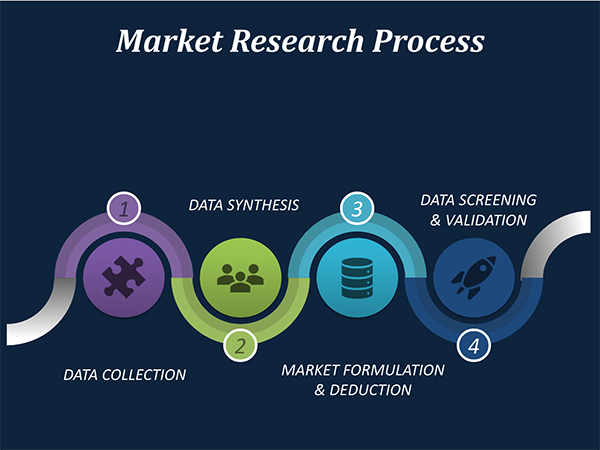
Data Collection: This stage of the market research process involves with the gathering and collecting of the market/industry related data from the sources. There are basically two types of research methods:
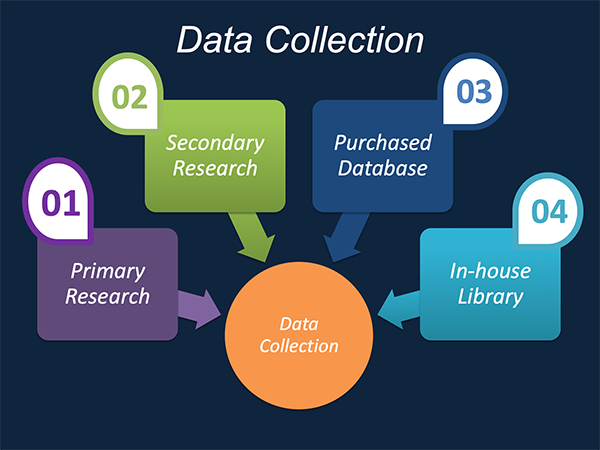
Data Synthesis: This stage includes the evaluation and assessment of all the data acquired from the primary and secondary research. It likewise includes in evaluating the information for any disparity watched while information gathering identified with the market. The data & information is gathered with consideration to the heterogeneity of sources. Scientific and statistical methods are implemented for synthesizing dissimilar information sets and provide the relevant data which is fundamental for formulating strategies. Our organization has broad involvement with information amalgamation where the information goes through different stages:
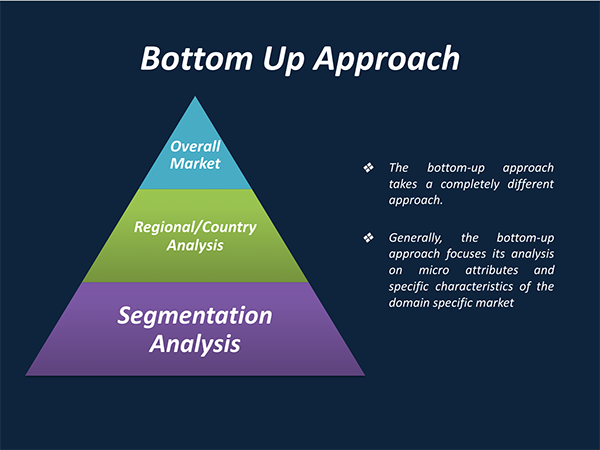
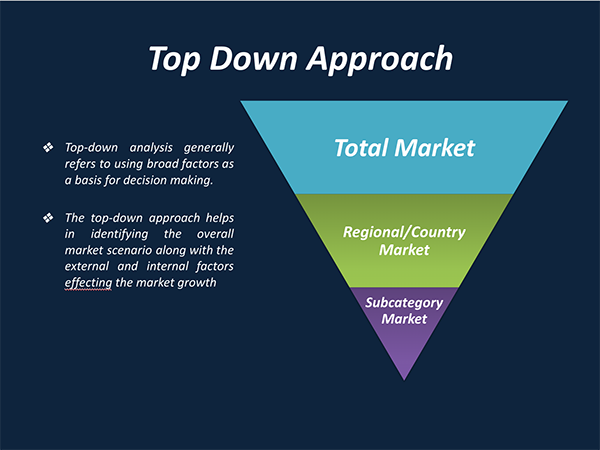
Market Formulation & Deduction: The last stage includes assigning the data & information in a suitable way in order to derive market size. Analyst reviews and domain based opinions based on holistic approach of market estimation combined with industry investigation additionally features a crucial role in this stage.
This stage includes with the finalization of the market size and numbers that we have gathered from primary and secondary research. With the data & information addition, we ensure that there is no gap in the market information. Market trend analysis is finished by our analysts by utilizing data extrapolation procedures, which give the most ideal figures to the market.
Data Validation: Validation is the most crucial step in the process. Validation & re-validation through scientifically designed technique and process that helps us finalize data-points to be used for final calculations. This stage also involves with the data triangulation process. Data triangulation generally implicates the cross validation and matching the data which has been collected from primary and secondary research methods.
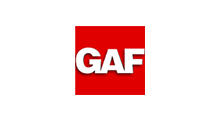

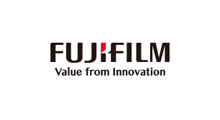
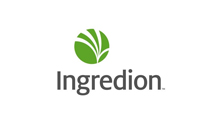

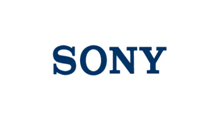
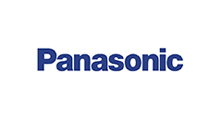
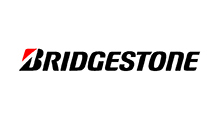
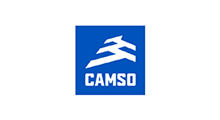
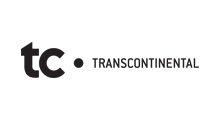
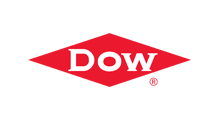
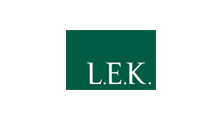
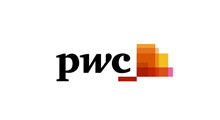

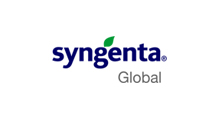
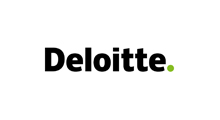
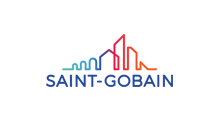
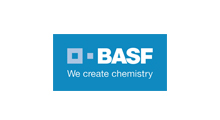
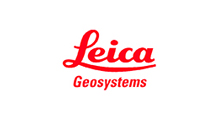
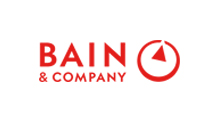
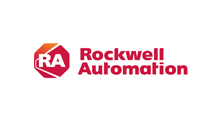
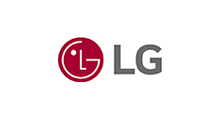
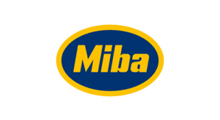
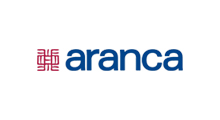
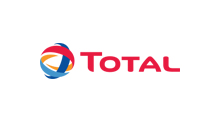
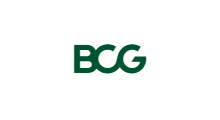
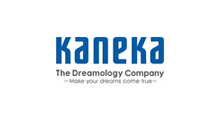
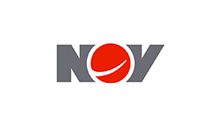
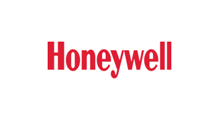
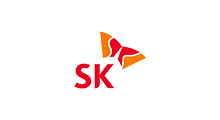
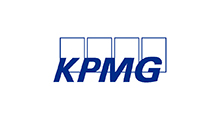
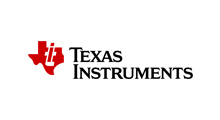
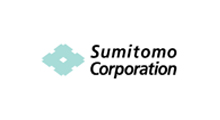
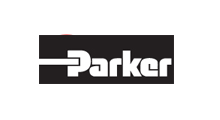
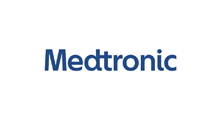
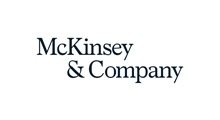

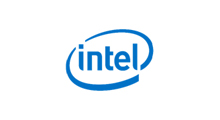
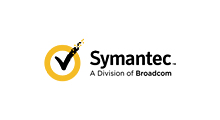
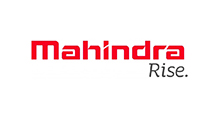
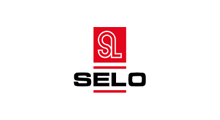
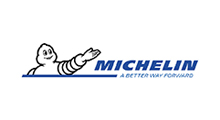
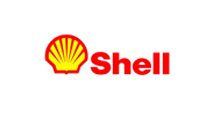
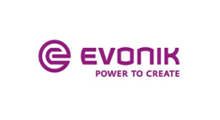

Free Customization
Countries can be added on demand
Free yearly update on purchase of Multi/Corporate User License
Companies served till date

We serve our customers 24x7 for 365 days through calls, emails and live chat options.

Huge database of exceptional market reports bringing market intelligence to your fingertips.

SSL enabled, we offer you various secured payment options for risk free purchase.